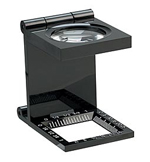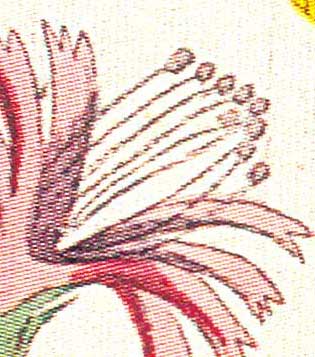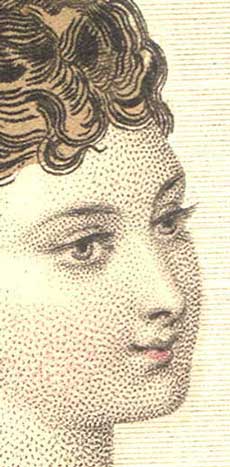Identifying
Antique Prints
A Basic Print Primer
Question #1 - Is it Modern Offset?
First a word of caution. There are many factors
that go into making a determination of whether
or not a print is original. But the the very
first thing you need to do is to make certain
your print was not done using modern offset
printing, the most common technique of printing
today. 
Luckily, this is very easy to do with the help
of an 5X to 10X magnifying loop. (The 5X loop
shown opposite as an example is available for
$7.99 from Radio Shack). They are also known
as "linen testers."
If you are interested in antique prints, you
really do need to make a small investment in
a loop (they usually cost less than $10). You've
seen dealers pull these out of their pockets
at Antique Fairs, unfold them, and use them
to peer intensely at an object. Well think how
you impressive you will look with one of your
very own!
Once you have your loop, take a look at an
illustration in an ordinary magazine. Offset
printing is used to print magazines, so you
can get used to identifying what you do not
want to see in an antique print.
Enlarge the
first picture opposite to get an idea
of what offset printing looks like. You can
see the pattern particularly clearly in the
pink petals of the flower. In an antique hand-painted
print, you would see smooth tonalities in the
area of color, with no "color-separation"
pattern.
The second image
shows the enlargement of a hand painted copperplate
print of a Hummingbird, an 18th Century original.
The colored areas are smooth and do not have
the typical offset pattern.
Lastly, look at the 19th
Century steel plate fashion print in
the third photo. There are dots, but these are
the shading dots created by the impression of
the steel plate. The areas of color, applied
over the printed outline, are fluid and smooth.
There is no pattern in them. Look at her hair,
and her red bow where the painter has in fact
made a little error in coloration. This is an
original 19th Century print.
Once you have established that your print is
not offset, you will want to examine it more
closely to establish what printing technique
as used - woodblock, engraving, etching, aquatint,
steel plate, lithograph, etc.. Here things get
a little more complicated. If you want to learn
more about how to do this, one of the classic
references on the subject is the book: How to
Identify Prints, by Bamber Gascoigne. It is
available on Amazon.
| Detail
of modern offset printing showing the typical
pattern |
Detail
of a hand colored print. Note that the areas
of color are fluid and without pattern.
|
|

Above: Offset printing displays this
very typical pattern under magnification.
Right: In the late 19th Century steelplate
print opposite, watercolor was applied
over a black and white print. The faint
pink tones in the cheeks and lips and
the brown of the hair are smooth and fluid
- there is no modern printing pattern. |
 |
Next Step - Looking at the Paper - (text
coming soon!)